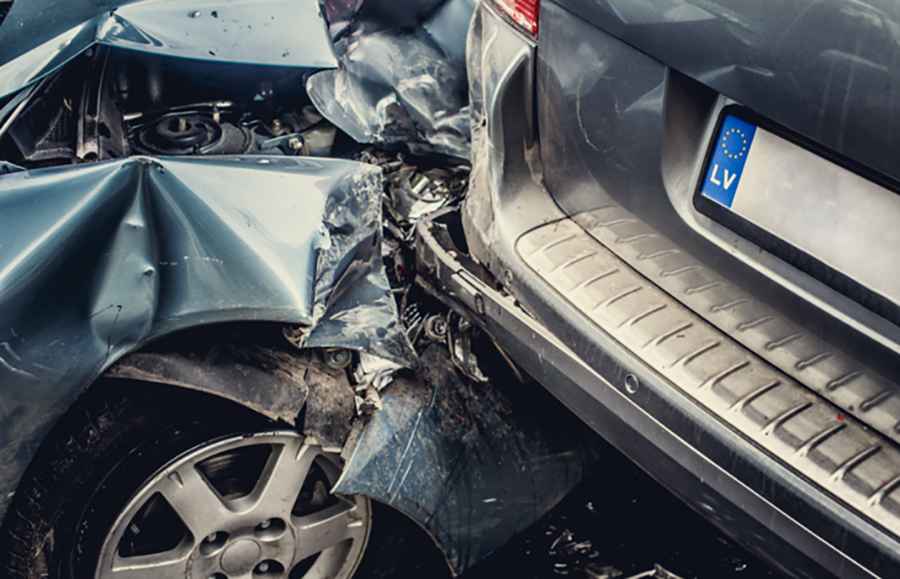Impact Location: An Important Factor in Car Accidents
Knowing the importance of impact location in car accidents is crucial, especially when seeking legal recourse. This information is essential to individuals in cities prone to car accidents, such as San Antonio. The vibrant city of San Antonio is located in Texas and is home to over 1.5 million residents. It is known for its rich history, cultural diversity, and bustling urban landscape.

However, car accidents remain a prevalent concern amidst the city's thriving atmosphere. In the event of a collision, the location of the impact on the vehicle plays a pivotal role in ascertaining the severity of injuries and the extent of property damage. Victims can rely on the expertise of experienced car accident attorneys in San Antonio. These professionals are ready to provide guidance and support, helping individuals explore the complexities of legal proceedings.
Let's dive into why the location of impact on a car is an essential aspect of car accidents and how it can influence the outcome of legal cases for victims of car accidents.
Frontal Collisions
Frontal collisions, which are among the most common types of car accidents, often end up in severe injuries and extensive vehicle damage. For example, these accidents are particularly prevalent in San Antonio, accounting for 52% of all reported car accidents last year, according to recent data from the San Antonio Police Department.
The force of impact in these collisions is typically concentrated at the front of the vehicle, leading to a higher risk of head and chest injuries for drivers and passengers.
Side Impact Crashes
Side impact crashes, or T-bones or broadside collisions, occur when the front of one vehicle hits the side of another. These accidents often occur at road intersections and can cause life-threatening injuries due to the lack of shields or protection on the sides of cars.
The impact location in these crashes can vary depending on the point of contact between the vehicles, with the driver or passenger side bearing the brunt of the force. Comprehending the dynamics of side impact crashes and their impact locations is essential for implementing effective safety measures and legal proceedings.
Rear-End Collisions
Rear-end collisions transpire when one vehicle crashes into the back of another car, often due to tailgating, distracted driving, or sudden braking. While these accidents are typically less severe than frontal or side impact crashes, they can still cause significant injuries and property damage. The Insurance Institute for Highway Safety implies that rear-end collisions accounted for 28% of all reported crashes in Texas last year.
The location of impact in these collisions is concentrated at the rear of the lead vehicle, leading to whiplash injuries for occupants and potential secondary collisions.
The types of car accidents and where they occur also play an important role in determining liability. Here’s how:
Rollovers
Although rare, rollover accidents are hazardous. They arise when a vehicle tips onto its side or roof due to high-speed maneuvers or a collision with another car or obstacle. Last year, accurate and verifiable information from the National Highway Traffic Safety Administration showed that rollover accidents accounted for 7% of all fatal crashes in Texas.
The location of impact in rollover accidents can vary depending on the direction and force of the initial impact, with the roof, sides, or corners of the vehicle bearing the brunt of the force.
Intersection Accidents
Intersection accidents materialize when two or more vehicles collide at an intersection, often due to failing to yield, running a red light, or making an improper turn. These accidents can involve various impacts, including frontal, side, and rear-end collisions, depending on the vehicles' movements and the point of contact. According to the San Antonio Police Department, intersection accidents accounted for 31% of all reported crashes in the city last year.
The location of impact in intersection accidents varies depending on the particular circumstances of each collision, making them particularly challenging to analyze and reconstruct.
Single-Vehicle Crashes
Single-vehicle crashes occur when a vehicle strikes an object, like a tree, guardrail, or utility pole, without involving another car. These accidents can result from various factors, including speeding, distracted driving, and adverse weather conditions. Information from the Texas Department of Transportation shows that single-vehicle crashes accounted for 45% of all fatal crashes in Bexar County last year.
The impact location in single-vehicle crashes is typically concentrated on the vehicle's front, side, or rear, depending on the nature of the collision and the point of contact with the object.
Final Thoughts
The location of the impact on the car is not just a detail but a crucial factor in determining the severity of injuries and the extent of property damage in car accidents. Whether it's a frontal collision, side impact crash, rear-end collision, rollover accident, intersection accident, or single-vehicle crash, the location of the impact plays a significant role in shaping the outcome for those involved.